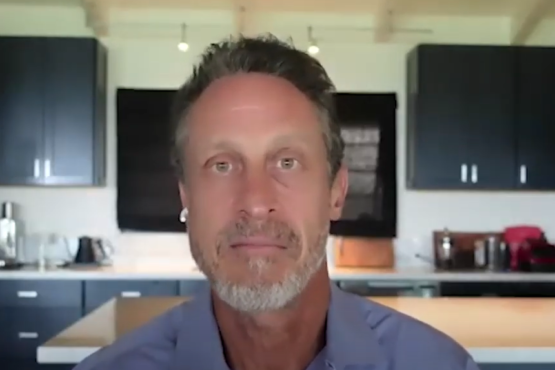The Beryl Institute defines Patient Experience as “the sum of all interactions, shaped by an organization’s culture, that influence patient perceptions across the continuum of care.” In short, how do people feel during and after interacting with their healthcare? Though the idea of “patient experience” has existed since the earliest days of healthcare, only recently has it been taken seriously and become an operational focus among healthcare providers. Some of that is driven by newer metrics from CMS that factor elements of patient experience into reimbursement, some is due to the encroachment of consumer-oriented companies like Amazon and Google into healthcare, and some is simply born out of recognition that the healthcare industry has for too long commoditized patients rather than focusing on what they really need and want.
Most of us have either had or heard of a horrible healthcare experience that left us wondering, how can caregivers be so uncaring? This is far too common. However, many health systems are going all in on carefully-considered patient experience (PX) programs to re-align business and operational considerations with the whole point of healthcare: the people coming through the hospital doors. Here’s what that looks like.
The Old Model of PX
Historically, traditional approaches to improving patient experience often involved bringing in a large consultancy who would provide a very prescriptive, multi-point plan along with training templates and onsite coaching. The focus was on standardization. Often missing from those off-the-shelf packages was any consideration of organizational culture, employee engagement or the ability to sustain momentum once the consultants left town.
It was a top down approach that, for all intents and purposes, resembled how a factory manager might implement new efficiency standards: “We’ve got to get all our workers marching in the same direction.”
After a several months or even a few years of this, many healthcare organizations realized that trying to achieve transformation by checklist and scripting was not an effective or sustainable model for fixing what is often a much deeper, more relational problem. Over and over, well-intentioned patient experience programs faded to the background, becoming just another flavor of the month. Without the intensity that radiates from a strong culture, aligned leadership, engaged employee base and clear prioritization, failure was the only logical result.
Worse than failure of the program itself was the resentment it bred. A program would wither on the vine and be forgotten, then management would come back sometime later (usually after a drop in HCAHPS, the CMS metric that incorporates patient satisfaction) and try again with a new flavor and set of acronyms. After a few iterations of this, people became calloused, frustrated and skeptical. Frustrated staff means a worse experience for patients.
The Newer, More Practical Px
Although these early, off-the-shelf approaches to patient experience often fizzled and led to even greater apathy, it is important to note that they were usually well intentioned, and some were even successful. With patient experience no longer in its infancy, it is important that we learn from both our failures and our successes. Thanks to growing self-awareness on the part of health systems and the work of organizations like the Beryl Institute (along with smaller groups like Jarrard Inc.), the approach to improving patient experience is becoming much more personal, comprehensive and therefore effective and sustainable.
Real transformation doesn’t come from a checklist. It comes from helping employees understand not only “patient experience” as a buzzword, but also that it is truly where the organization is headed and the context for change.
Today we’re seeing much more of a recognition that we can’t talk about patient experience unless we’re also willing to talk about provider experience. They’re deeply intertwined. We can’t talk about good patient communication if leadership isn’t communicating in a way that employees can connect with. “Walking the walk” has become such a cliché that it’s easy to miss the truth of the underlying idea – how can we expect something out of someone else if we don’t model it ourselves? This is at the core of the new patient (or human) experience model.
Think about environmental services, the team responsible for cleaning hospital rooms. They are vital for controlling infections and ensuring that hospitals are safe for patients and employees. Their work keeps people alive. It’s encouraging to know that healthcare leaders are now thinking about reaffirming the work of environmental services so that those employees think, “hey, I’m not just mopping a room, I’m helping save patients’ lives because I’m keeping our facility germ free.”
The Newer, More Empathetic Px
We will always need checklists. We need assurances that people are safe, that doctors and nurses are doing the right things. But at the same time, people – staff and patients – crave genuine relationships and time to interact. Just a moment is enough to hear a patient’s story and find a connection. The same is true for employees.
We have worked with clients to develop recognition programs within hospitals. No, not annual self-congratulatory awards ceremonies, but encouraging little things like handwritten notes, quick huddles to highlight a colleague’s good work. We’ve found that when hospitals put aside the nomination forms and formal awards (which often actually decrease recognition), people end up more connected and feeling more respected – because it’s more personal and immediate, there’s not a pile of paperwork to hide behind.
Ok. So, this is a lot of behind-the-scenes talk. But why does it matter for to patients and their families? (Which includes us, because we will all be in a hospital bed or be with someone who is.) It matters because once an organization has opened a genuine dialogue and fostered trust among its employees, the experience of individual patients begins to improve. Clinical staff communicate more effectively – so details about a patient get passed along. Environmental services employees are more thorough and friendly – so patients get a smile and conversation and a safer room. Nurses are ready to jump in and help an overwhelmed colleague – so patients get quicker, more focused care. Everyone feels comfortable suggesting ways to improve – so patients get the long-term benefits of collective action.
Here at Jarrard, like everyone, we see the myriad ways the healthcare industry does not always deliver on its core promises. And yet, we are encouraged by the increasing number of conversations we have with healthcare providers asking how to build a better patient—and caregiver—experience and then sustain it. Even better are the tangible results happening and hospitals all over the country thanks to a refocusing on patients and employees as people—worthy of respect and personal attention. It’s hard to see sometimes amidst the negative headlines and political squabbling. But we are very optimistic that the industry is turning the corner. We’re happy to provide just a little insight and, hopefully, encourage you that good things are happening.
For more on how Jarrard Inc. is thinking about the patient experience and change in healthcare, head over to The Art of Change, a thought leadership platform addressing the relationships and fundamental human dynamics at the core of our industry.



